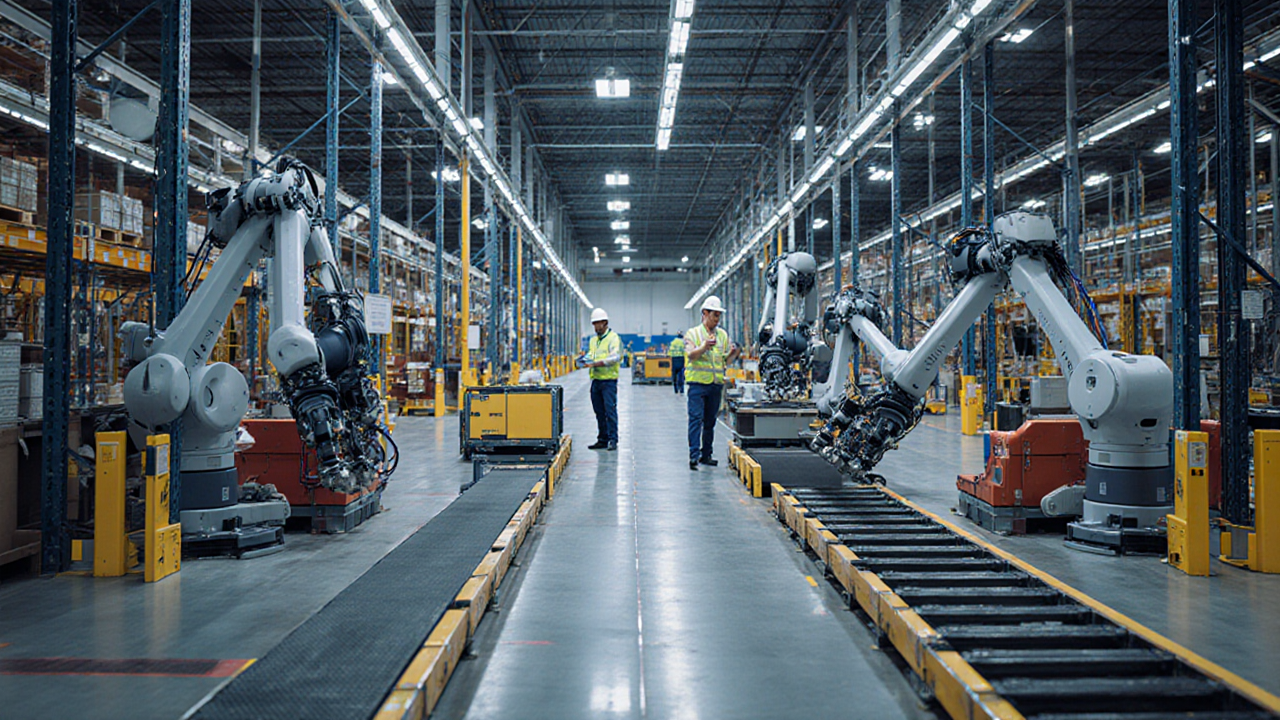
When supply chains settle into comfortable rhythms, the call to reimagine workflows can feel disruptive. Yet, that very disruption signals where the industry is heading. The latest wave of generative and agentic artificial intelligence is not merely a technological upgrade; it is reshaping the fundamentals of operational efficiency and strategic agility across the logistics landscape.
Why This Matters for Your Supply Chain
A recent industry survey revealed that the adoption of [generative AI](https://www.microsoft.com/en-us/industry/blog/manufacturing-and-mobility/mobility/2025/03/20/the-future-of-logistics-how-generative-ai-and-agentic-ai-is-creating-a-new-era-of-efficiency-and-innovation/ "The future of logistics: How generative AI and agentic AI is creating a new era of efficiency and innovation - Microsoft Industry Blogs") has cut operational costs to four‑fifths of previous levels, a reduction that echoes across warehouses, transportation hubs, and distribution centers worldwide. At the same time, the market for generative AI in logistics is projected to exceed $23.1 billion by 2034, underscoring the rapid pace at which these tools are becoming mainstream. The technology’s ability to simulate scenarios, enrich training data, and automate routine tasks fuels this growth, offering leaders a powerful lever for precision planning and execution.
The Dual Power of Generative and Agentic AI
Generative AI excels at pattern recognition and content creation, producing synthetic data that fills gaps in historical records. Agentic AI, on the other hand, takes those outputs and applies reasoning, planning, and autonomous action. When combined, logistics leaders can generate a multitude of delivery schedules and let the agentic system select the optimal plan in real time, adjusting for traffic, weather, and other disruptions. This synergy moves supply chains from reactive to proactive, enabling continuous optimization across the entire network.
Redesigning Workflows, Reskilling Teams
Tools alone are insufficient. Only 21 % of respondents in a recent survey reported having fundamentally redesigned at least some generative‑AI workflows, and 44 % have reskilled at least five percent of their workforce. These process changes are the bedrock that allows agentic AI to operate effectively. By embedding AI into core operations and cultivating a culture of continuous learning, organizations create the conditions necessary for scalable, autonomous decision‑making.
Generative AI Enhances Demand Forecasting
Forecasting is evolving from a probabilistic exercise into a precision instrument. By generating countless “what‑if” scenarios and synthetic data for rare events—such as a sudden spike in plant‑based products following a viral trend—generative AI sharpens the accuracy of demand models. Research from leading academic institutions indicates a 15 % improvement in forecast accuracy after deploying AI‑powered planning systems. For logistics teams, this translates into more robust inventory levels, reduced stockouts, and a smoother response to market volatility.
Agentic AI Drives Autonomous Operations
Investment in agentic AI for logistics has already reached $85 million in funding, targeting autonomous routing, scheduling, and billing. Early adopters report inventory and logistics cost reductions of more than 20 % and a dramatic shortening of documentation cycle times—from days to hours or even minutes. These gains stem from advances in large language models, API integration, and GPU‑accelerated computation. The agentic AI market in supply chain and logistics was valued at $8.67 billion in 2025 and is projected to hit $16.84 billion by 2030, growing at a CAGR of 14.2 %.
Preparing Workflows for AI Integration
Successful deployment hinges on seamless integration across disparate systems. A modular, distributed architecture—often referred to as an AI mesh—enables teams to deploy and manage autonomous agents at scale while maintaining flexibility. Consolidating data from spreadsheets, transportation management systems, warehouse management systems, and enterprise resource planning into a single, structured repository is a prerequisite. Cleaning and standardizing this data removes friction, allowing AI agents to interact fluidly across the operational ecosystem.
Human oversight remains essential. A hybrid approach, where autonomous agents handle routine decisions and human leaders intervene on strategic or exceptional cases, ensures accountability and builds trust. Leaders should begin by piloting AI in a limited scope—such as fleet tracking or order management—and expand as confidence and performance grow.
Strategic Recommendations for Supply Chain Leaders
Redesign Workflows Early: Embed AI considerations into process mapping to create a foundation for autonomous decision‑making.
Invest in Data Hygiene: Prioritize data consolidation, cleansing, and standardization to unlock the full potential of AI models.
Adopt a Modular Architecture: Deploy AI agents within a flexible, cloud‑friendly framework that supports rapid scaling and integration.
Cultivate Talent: Reskill staff to manage, interpret, and refine AI outputs, ensuring a human‑in‑the‑loop that balances efficiency with oversight.
Measure Impact Continuously: Track key metrics—cost savings, forecast accuracy, cycle times—to validate ROI and guide iterative improvement.
By weaving generative and agentic AI into the fabric of logistics operations, leaders can transition from reactive management to real‑time, data‑driven optimization. The result is a more resilient, efficient, and sustainable supply chain that meets the demands of an increasingly complex global market.
Loading comments...